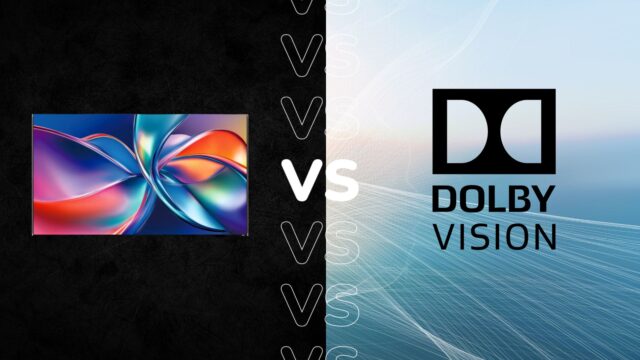Dolby unveiled its newest HDR format in Dolby Vision 2, which it says promises to unlock “even more potential from TVs, thanks to “new powerful intelligent technology”.
While we found the Dolby Vision 2 launch to feel pretty confusing, we’ve highlighted what we do know about the upcoming technology against its predecessor below.
It’s worth noting there are still some aspects about the ner HDR format which Dolby Industries is yet to clear up, including whether Dolby Vision 2 is a software or a hardware upgrade that makes it exclusive to upcoming TVs.
Otherwise, make sure you read our Dolby Vision HDR guide to get a refresher on the original technology.
Dolby Vision 2 is powered by a redesigned image engine
Dolby explains that Dolby Vision 2 is powered by a “redesigned and even more powerful image engine” that “unlocks even more of your TV”.
While we’re yet to see Dolby Vision 2 in action, its redesigned image engine should result in more detailed images on screen, which ensuring colours remain both visible and clear.
Dolby Vision 2 includes Content Intelligence
Content Intelligence is a suite of AI-powered tools, found in Dolby Vision 2, that promises to “better bridge the creative suite to the viewer’s living room”.
Content Intelligence includes the likes of Precision Black which promises deep blacks that mirror artistic intent without losing detail and Sports and Gaming Optimisation which address the specific needs of live sports and gaming.
As Content Intelligence is powered by AI, Dolby promises that Dolby Vision 2 will adapt accordingly to give the best presentation depending on your device and viewing environment too.

Dolby Vision 2 introduces new tone-mapping
As TVs are brighter and more colourful than ever, Dolby Vision 2 promises to take advantage of this with its new tone-mapping feature. It explains that bi-drectional tone mapping offers creators new controls that allow them to “make the most of these enhanced displays”.
However, it’s worth noting that at the time of writing, Dolby hasn’t given much detail into what these controls will entail.
Dolby promises that these new controls should allow high-performance TVs to deliver higher brightness, sharper contrast and saturated colours.


Hisense will be the first brand to introduce Dolby Vision
At the time of writing, Hisense will be among the first TV brands to introduce Dolby Vision 2 to its lineup.
While Hisense haven’t revealed availability, price or a release date, it has said these TVs will be powered by MediaTek Pentonic 800 which is the first silicon chip to integrate Dolby Vision 2
Otherwise, French streaming site Canal Plus is among the first to promise to enhance its lineup with Dolby Vision 2.
Dolby Vision 2 will be available in two tiers
Although Dolby is yet to reveal any launch dates or availability, it has revealed that Dolby Vision 2 will be available in two product tiers from manufacturers.
There’s the entry-level Dolby Vision 2 which promises “dramatically improved picture quality to mainstream TVs” and Dolby Vision 2 Max which should offer “the best picture of the highest performing TVs”.
Early Verdict
Considering it has been over ten years since the launch of Dolby Vision, the prospect of Dolby Vision 2 is undoubtedly exciting. While we’re yet to see the technology in action, with the promise of AI-powered tools to enhance picture quality, Dolby Vision 2 seems promising.
However, with confusion surrounding the launch and when we’ll actually see the technology in action, we’ll have to wait and see what happens.










